It’s that time of the year, when the sap is flowing and the wood is getting hard. When the hormones are beginning to do their chemical wonders and the smell of propagation is in the air.
Cuttings, seed, and air layering!
I covered the process of air layering in this post last year.
For detailed info look there.
I’ll again be doing a Brazilian Raintree but also: podocarpus, hackberry, elm and ficus. And an experimental air layer: nea buxifolia !
I think I’ll make this a yearly post. And I’ll try different trees and we shall see what works and what doesn’t.
Lets try an easy one first.
Ulmus alatta: the winged elm.
The key to air layering success is including, underneath your moss, the presence of buds. Not that kind of bud, childish.
A bud is a place where, in bright, clean sunlight, a verdant leaf and branch will emerge. But in cold, wet, darkness pale, maggot like growth will push forth; magically, sending, searching, snaking long tendril-like fingers in reaching for purchase and sustenance.
Roots, in other words.
So it’s a good idea to pick species that have evident buds when we are air layering.
Like an elm.
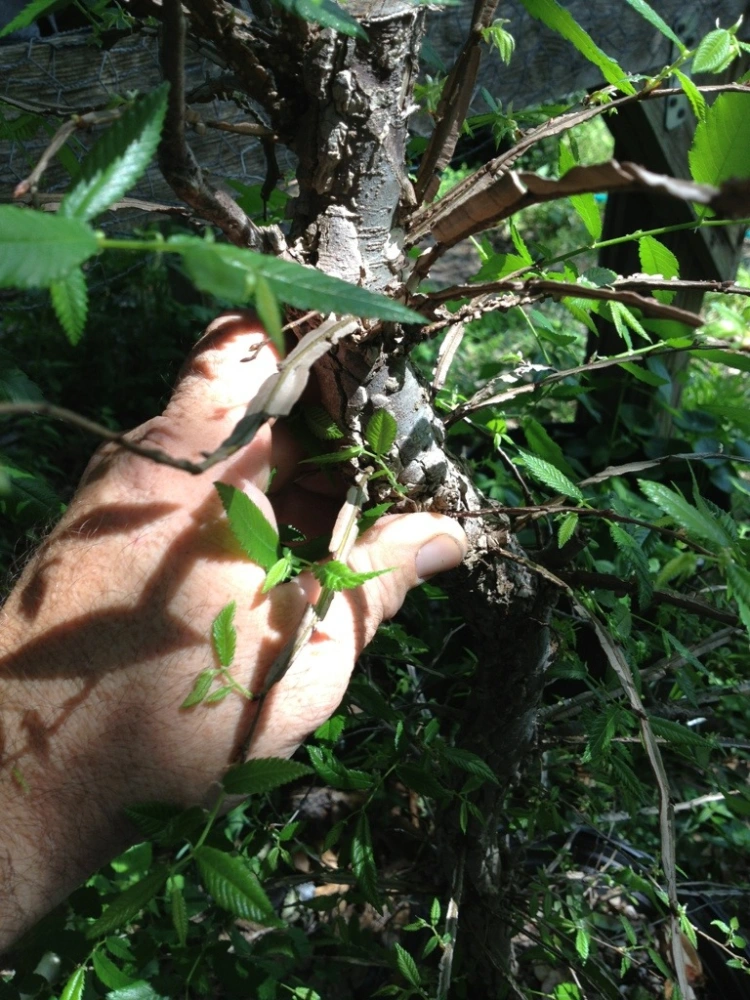
All those little bumps are potentially buds.
As you can see
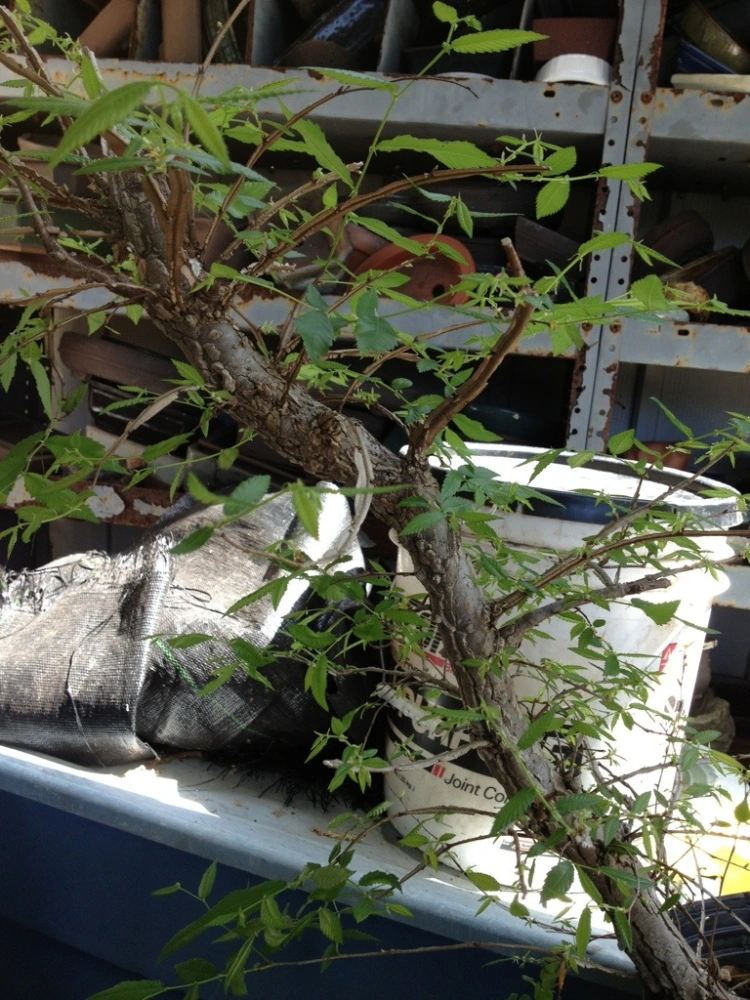
This tree has no taper. So it has to be chopped back. But it has that nice wiggle and that’s where I want to air layer.
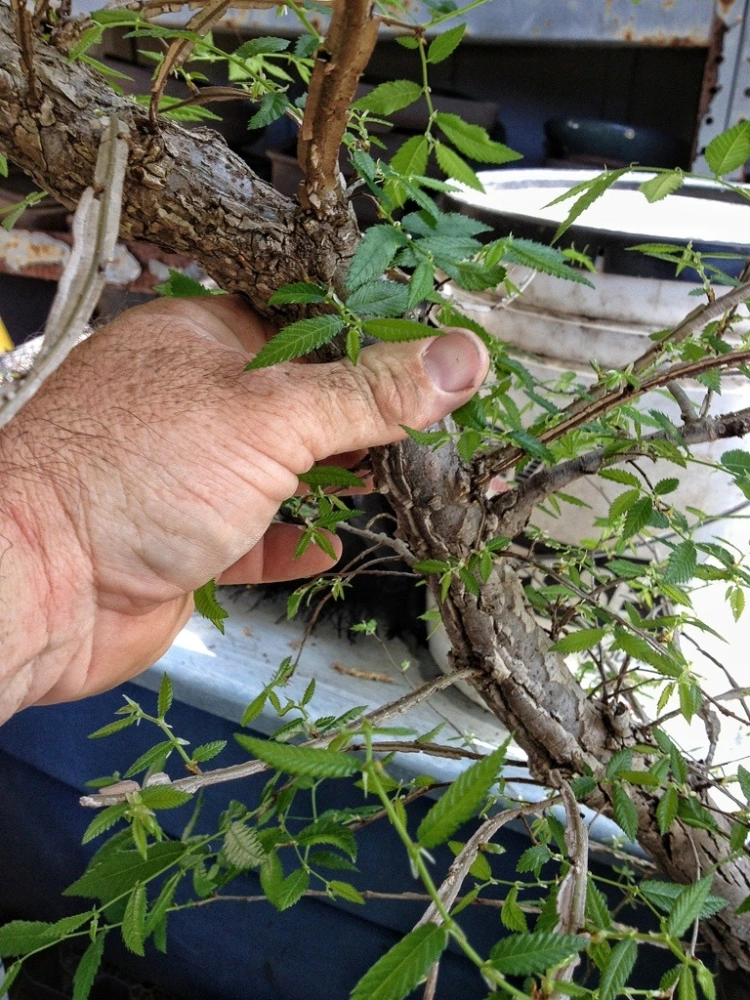
First, trim the twigs and branches away

And make two cuts around the trunk about the thickness (give or take) of the trunk apart

and peel the bark away down to the wood.
I kept intact the branch collar

because that’s an awesome spot for roots to emerge.
Cover with sphagnum moss, aluminum foil and tie it with wire.
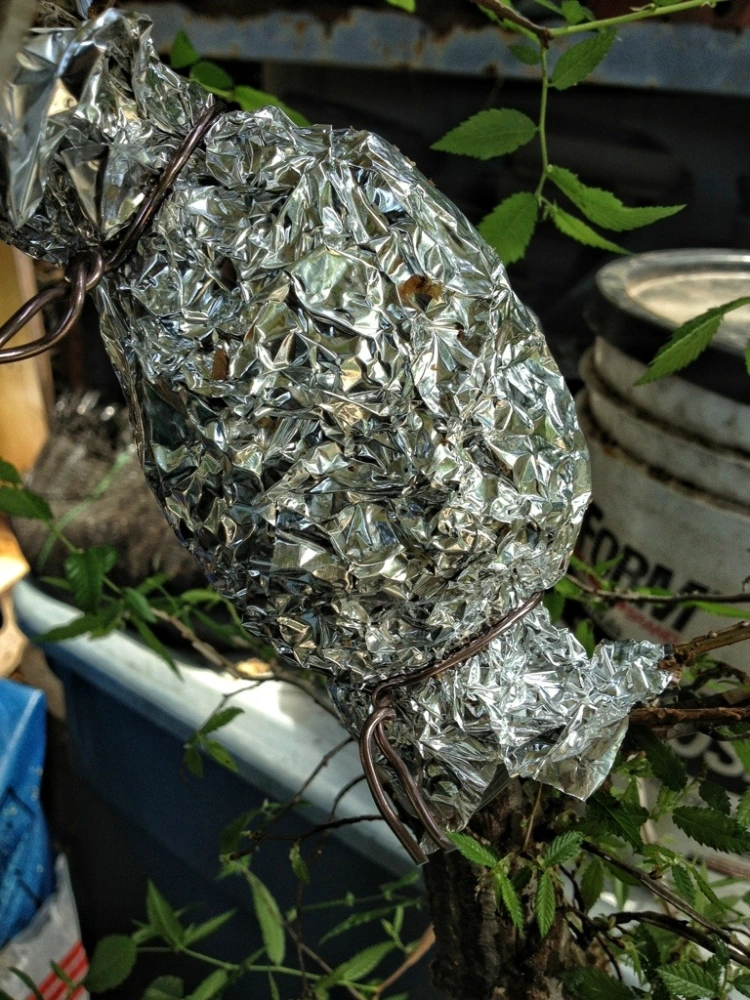
I don’t use rooting hormone. I don’t find the need.
The next subject is nea buxifolia. It’s a native Puerto Rican tree that’s considered a weed by some.
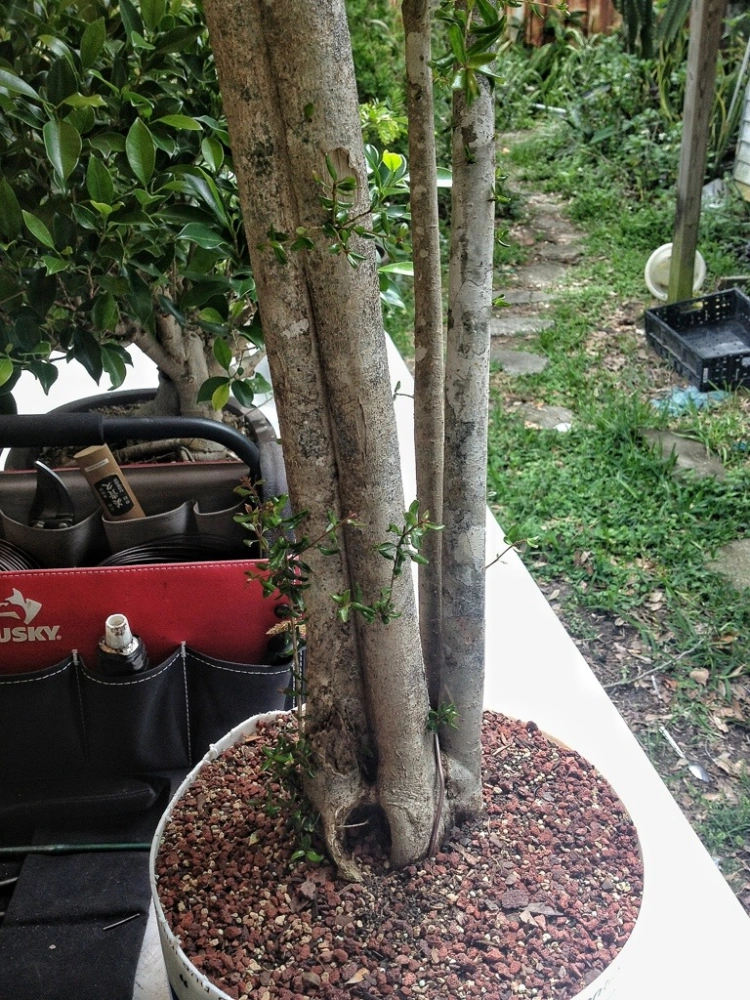
They also grow very straight and usually have no taper. This telephone pole is about 4 ft tall
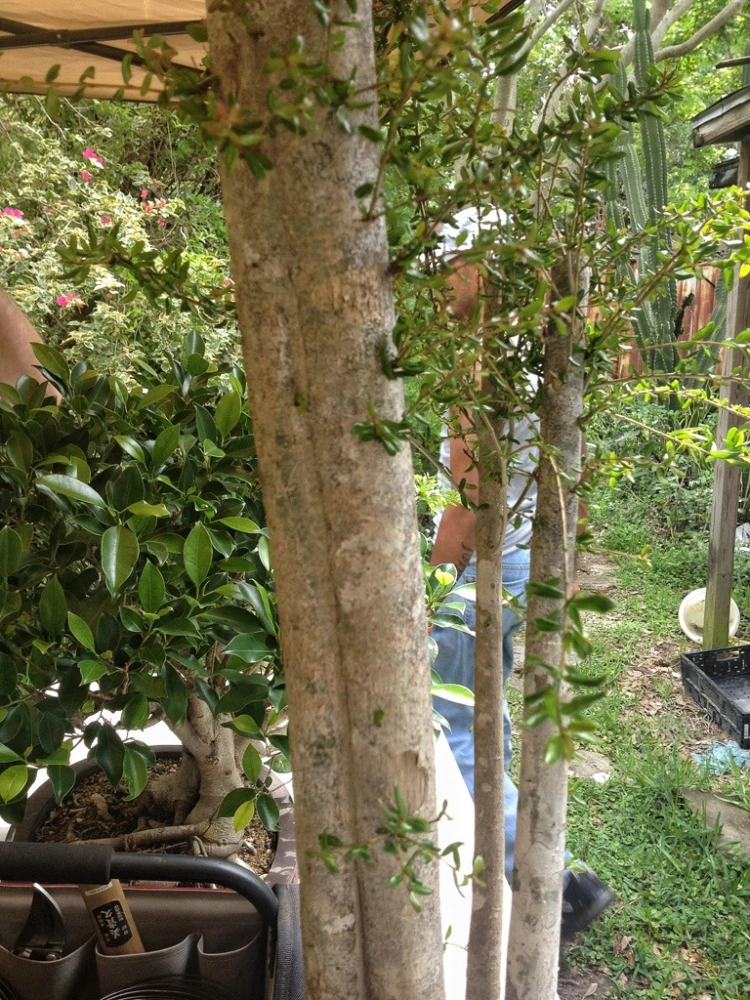
This is an experiment with this nea. I’ve never heard of anyone attempting it but, since we have to cut it back to induce taper, why not try to save the top. Right? It can be grown from cuttings so it might be possible.
When you make your ring cut
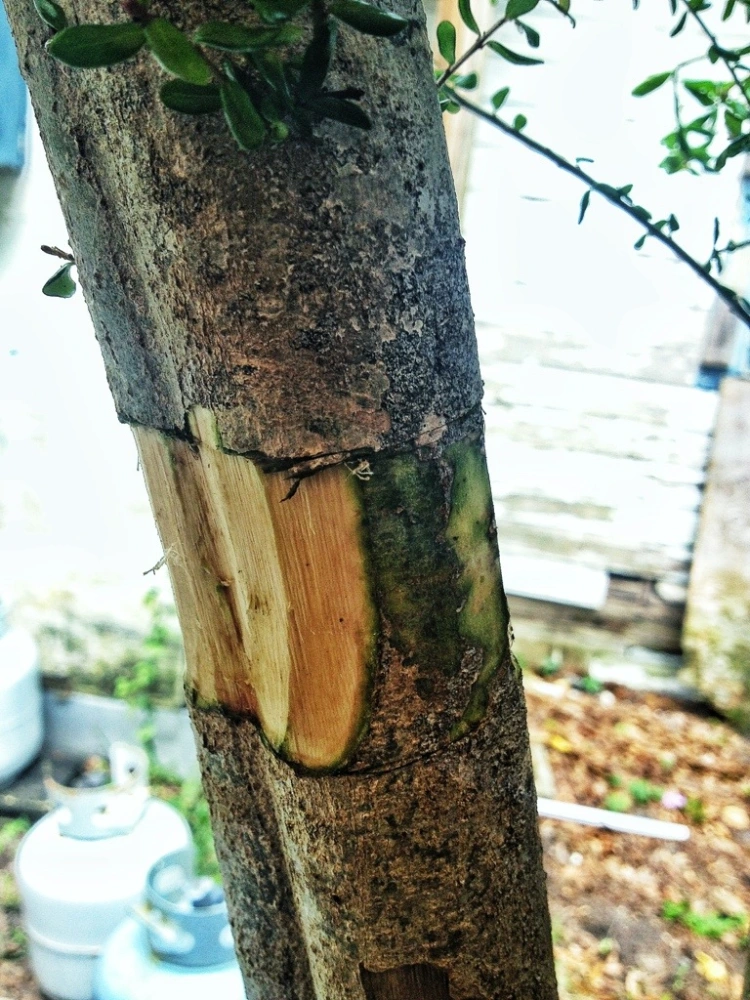
You will notice that you have the bark, then the layer under that (which could be green, red, orange, yellow). Peel off all that until you get to the wood.
Grab a handful of sphagnum moss (wear gloves) and some aluminum foil

And wrap that willie.
Again, I use wire to tie the foil off. I’ll go in every week or so and re-wet the moss.
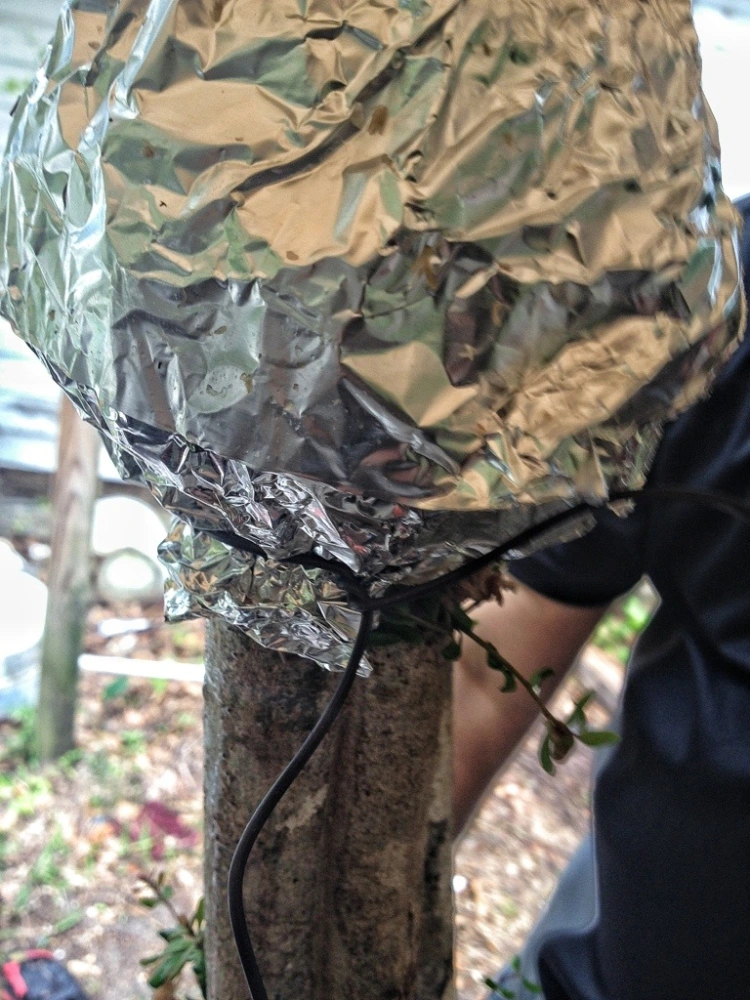
Let’s see if the tree gods smile on me and we have success.
Most of this was done at the monthly study group meeting.
And I was grilling

so the next several pics show my corillo at work.
If you remember the Rogues Gallery post (here) I promised a side by side comparison on the efficacy of a cutting compared to an air layer on a ficus.
It was these trees
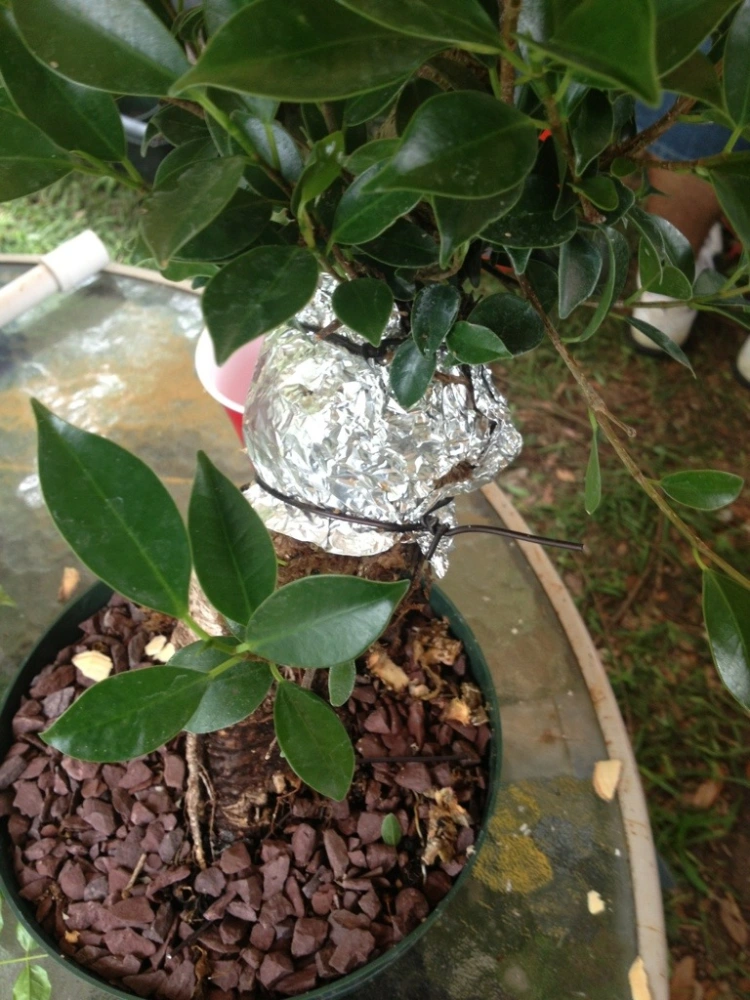
On the first one we take the top
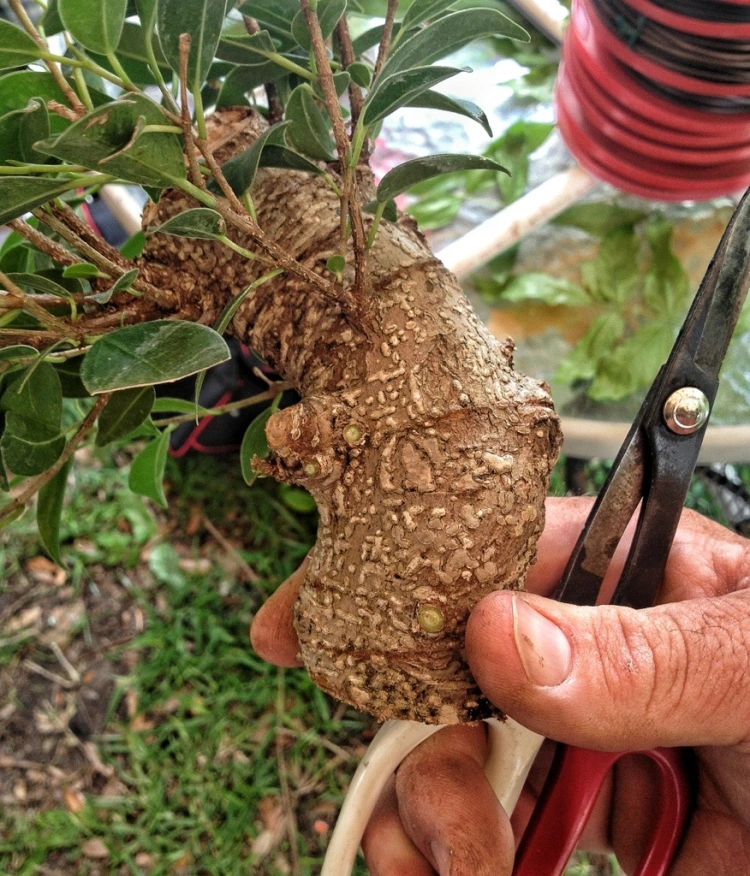
And plug it into some good soil
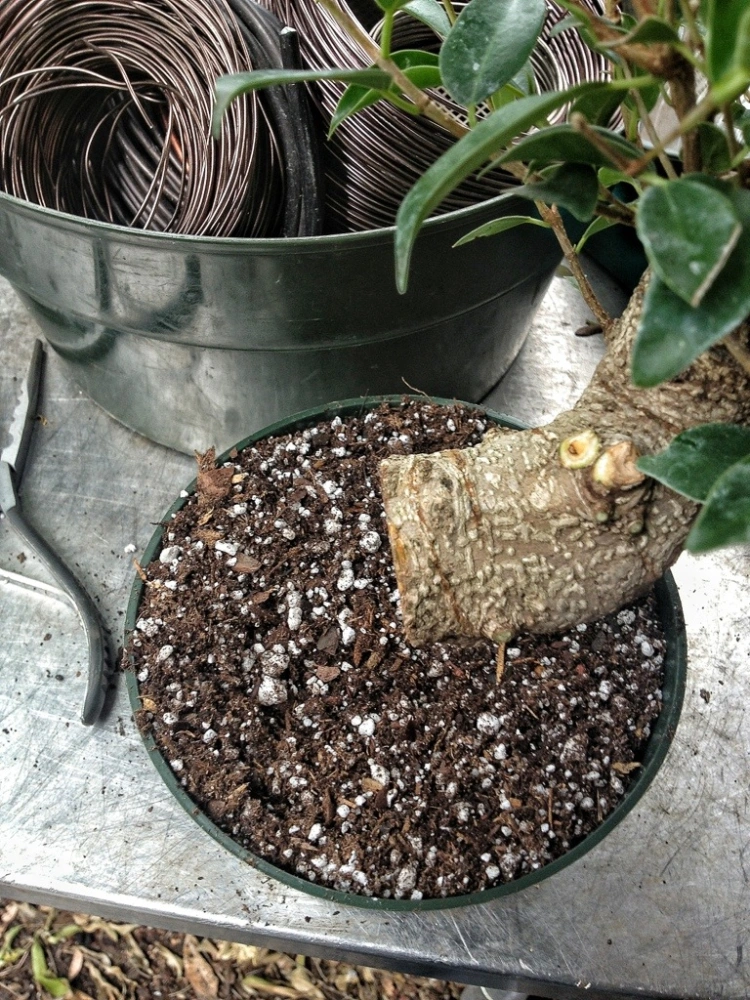
and keep it wet.
The bottom is repotted into bonsai soil
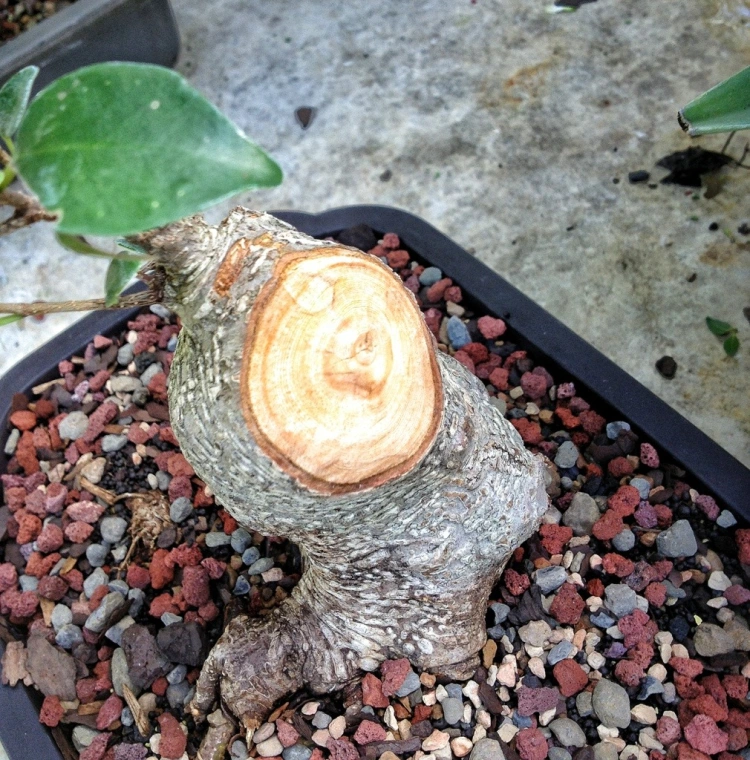
The wound is shaved smooth and even
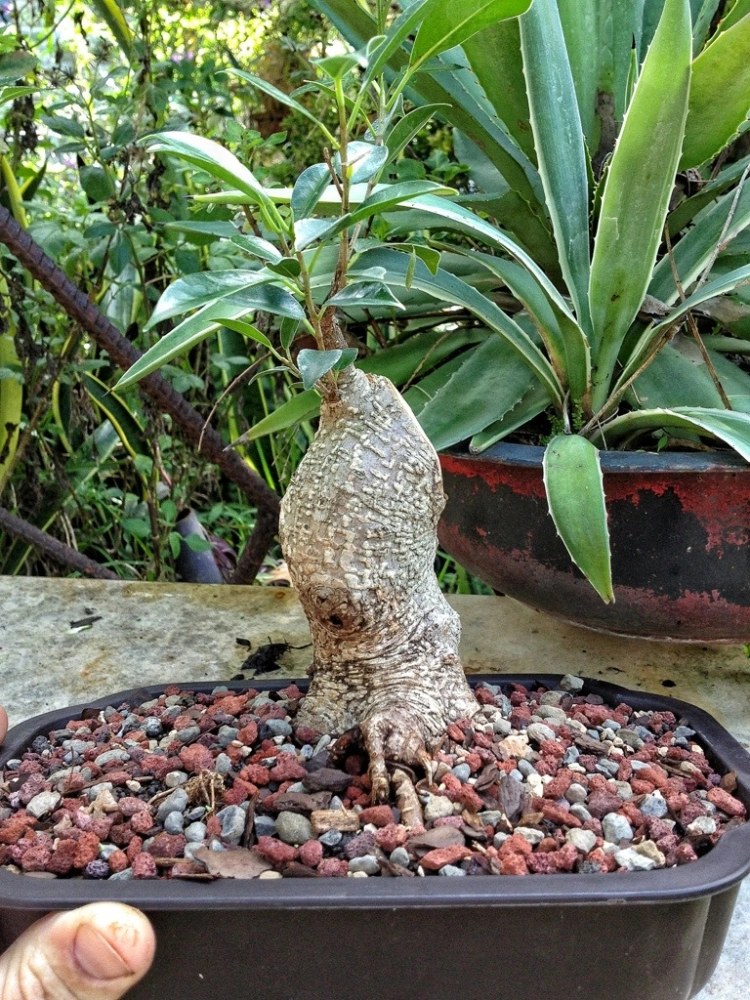
The advantage to the chop method: the bottom tree will be a bonsai quicker.
This makes me want to sing. I filked a song for the occasion.
Watch it on YouTube here (Cut It Back). My apologies to the Stones.
Here’s a big raintree
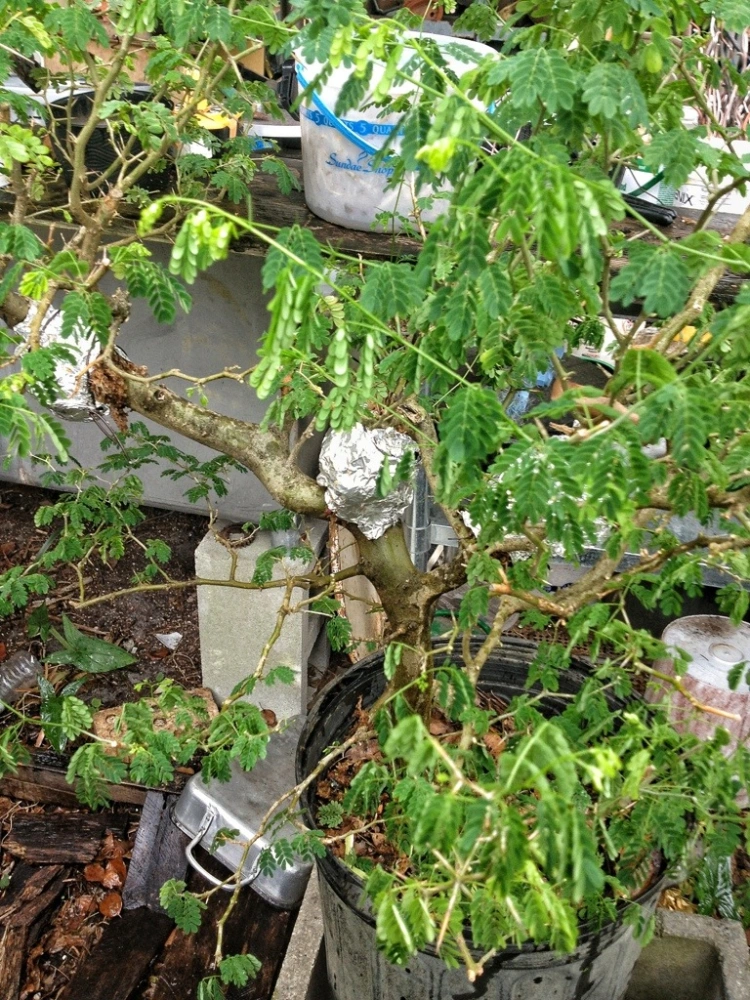
We put three on this one. Which answers the question “Can I put more than one on a tree?”
Yes you can. Just make sure there is not more than one in a row on the tree.
Good

The next two victims are a podocarpus
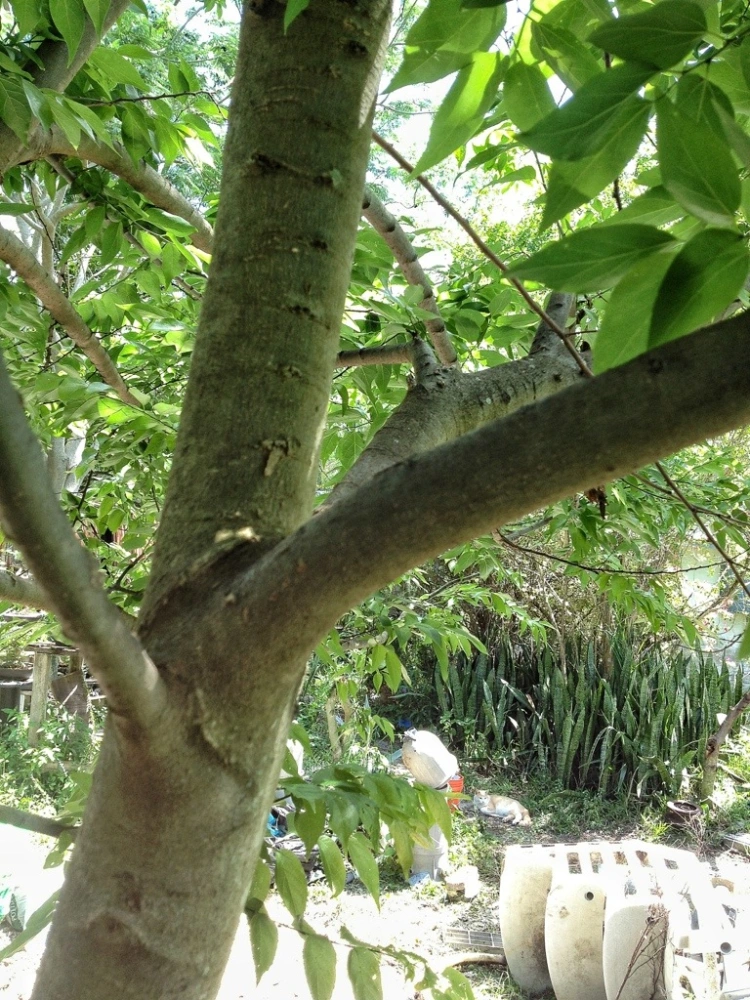
Both of these trees are in the ground. Which answers that question.
The podo was just cut back heavily and has exploded with growth. I plan on collecting it next year. It’s about 7 feet tall at the moment and will be cut back to about 3 feet after collection. So I says to myself
“Yo, self! Since youze’r doin’ sum layerin’, why ain’t youze try a podo?”
I looked up if people had done it and, yes, they had. And had success, so….here we are.
The site
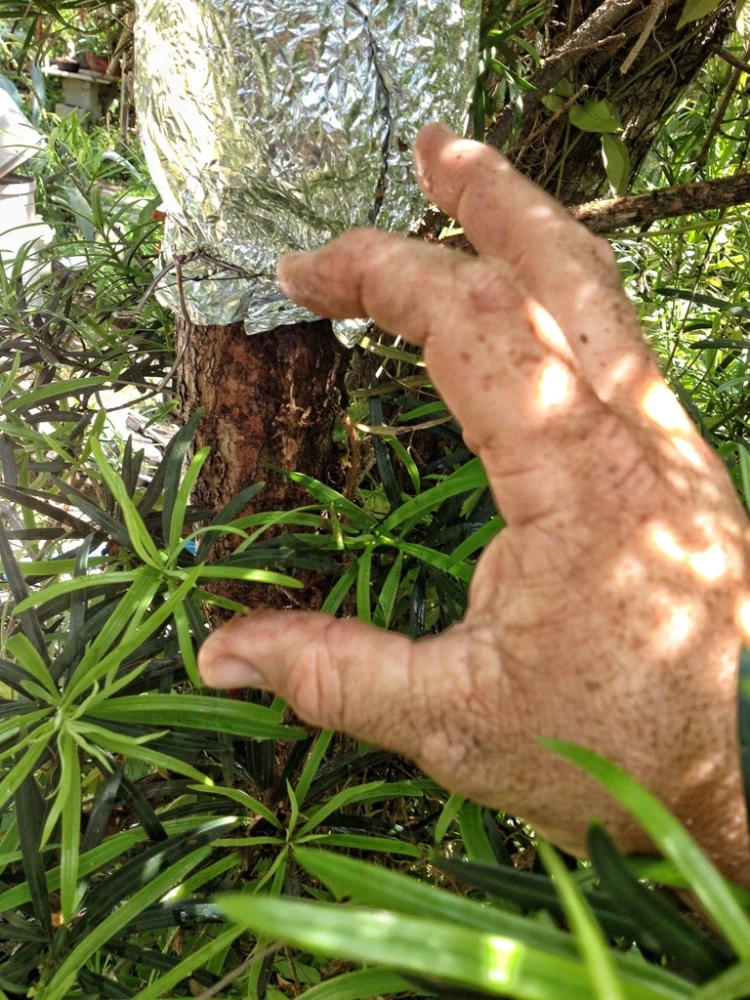
Which is what I tell all the ladies. But I’m not fooling anyone.
And let’s pray to the Druids it works.
Now, I’ve tried to air layer the hackberry before.
It defeated me. It just healed over the cut end. Which surprised the hell outa me.
This time I will succeed. Or have some nice pics to blog about.
Ring cut, extra wide
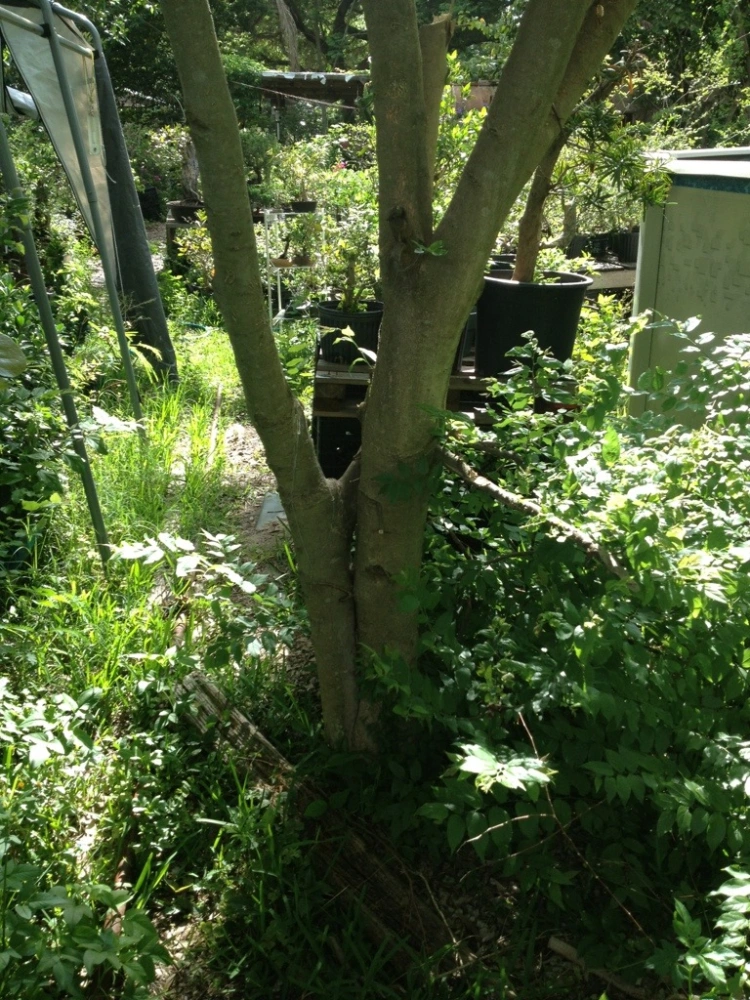
Which I intend to collect next year as well.
Do you have your fingers crossed?
Will we do the impossible (air layer a nea) and the uncommon (a podocarpus); will the hackberry laugh at us again?
Stay tuned (or check back in a few months.)
All your questions and more will be answered.
Or I’ll make soup.
Speaking of food, the corn was so sweet it didn’t need butter and the chicken was cooked skilfully.
At least that’s what Don and Smitty say.
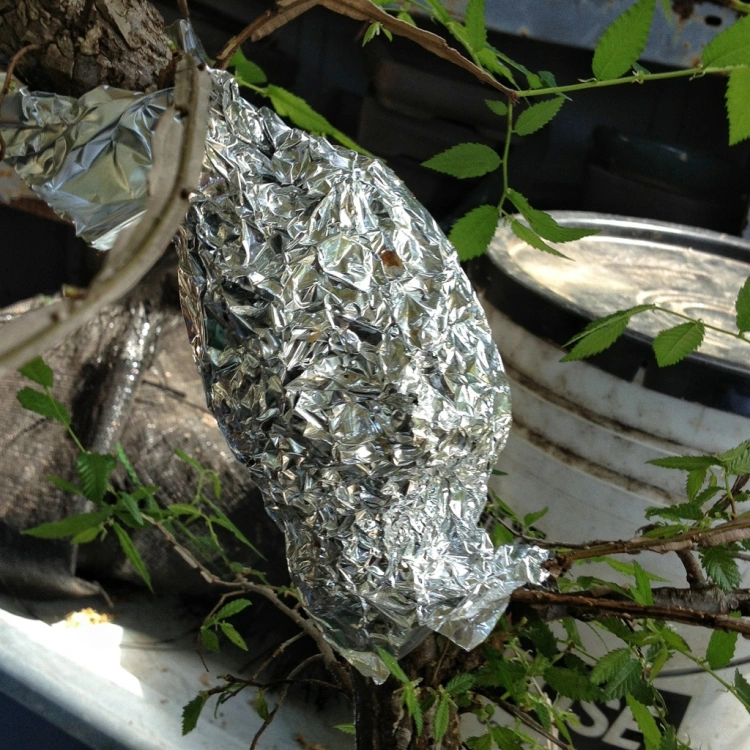


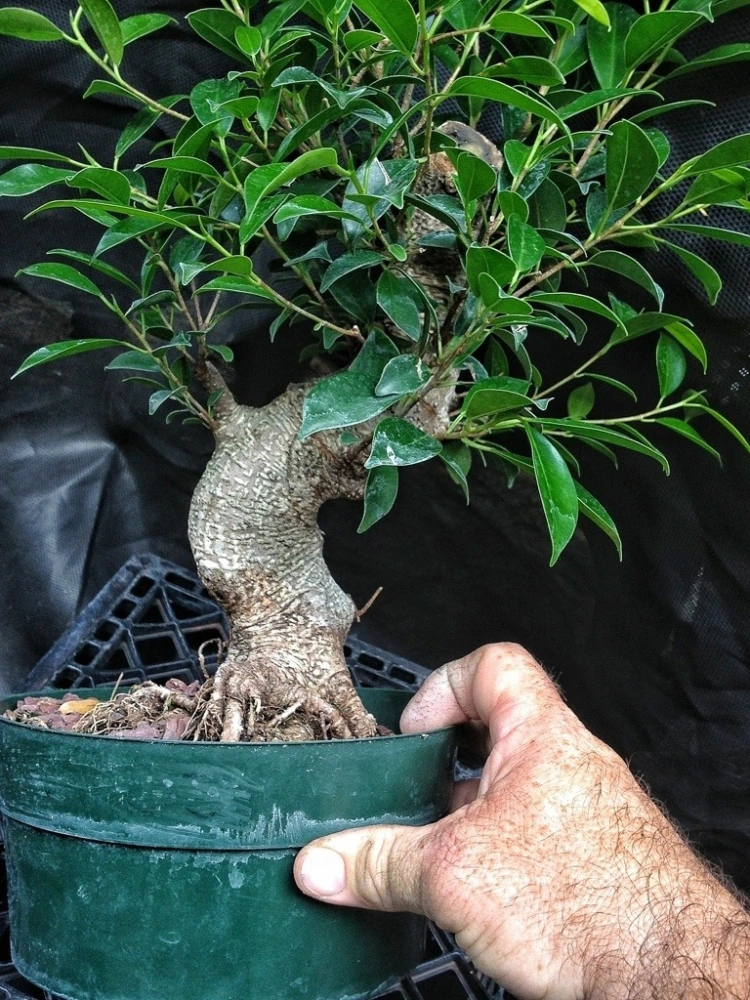

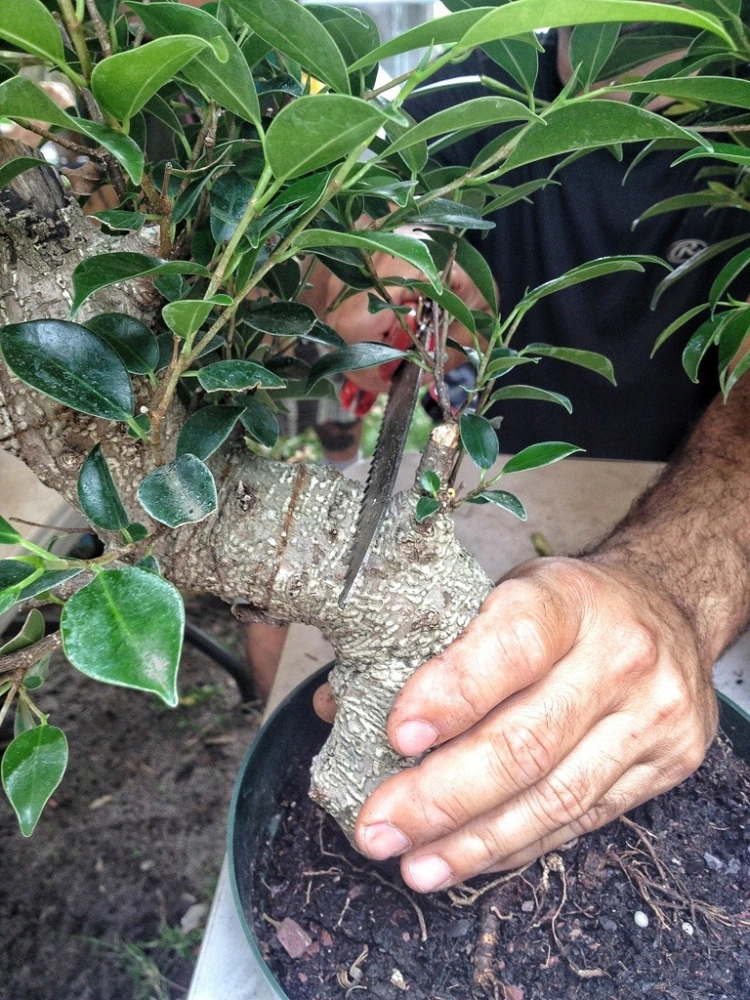
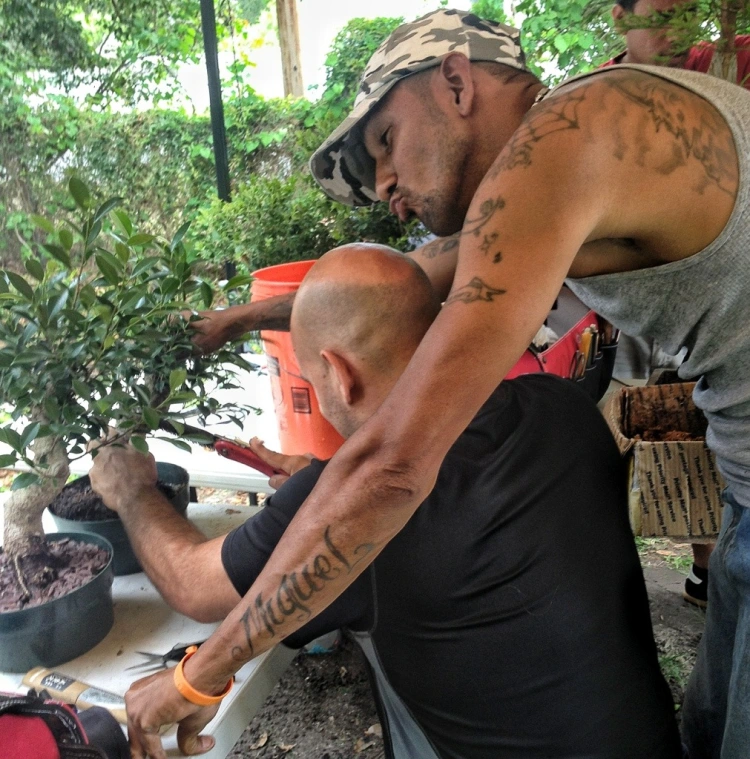

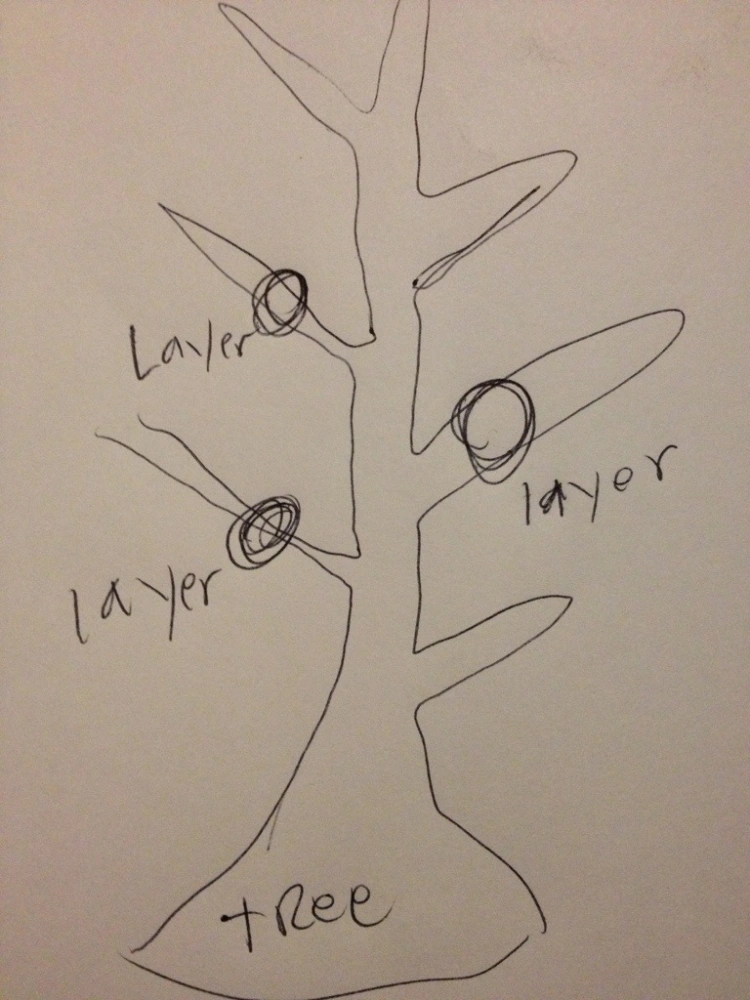


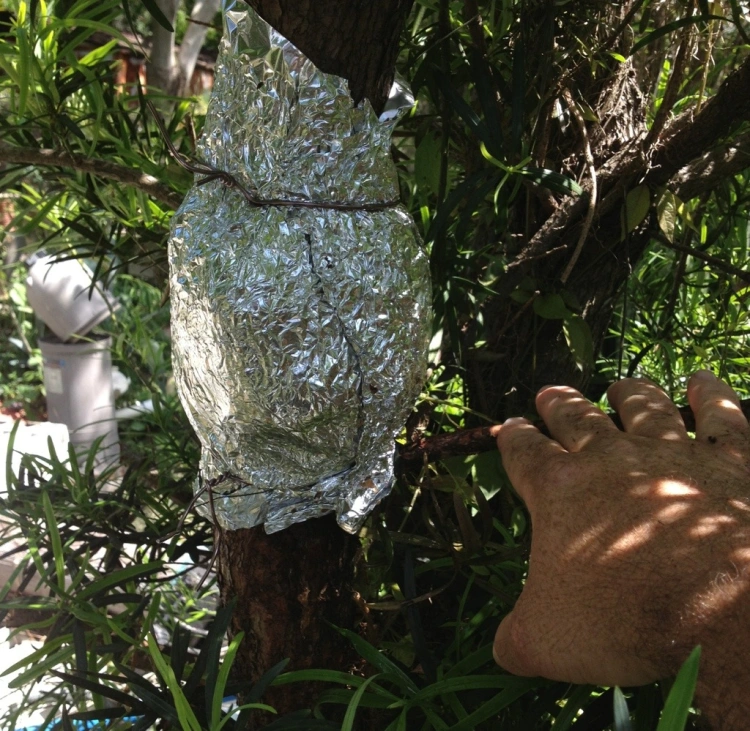
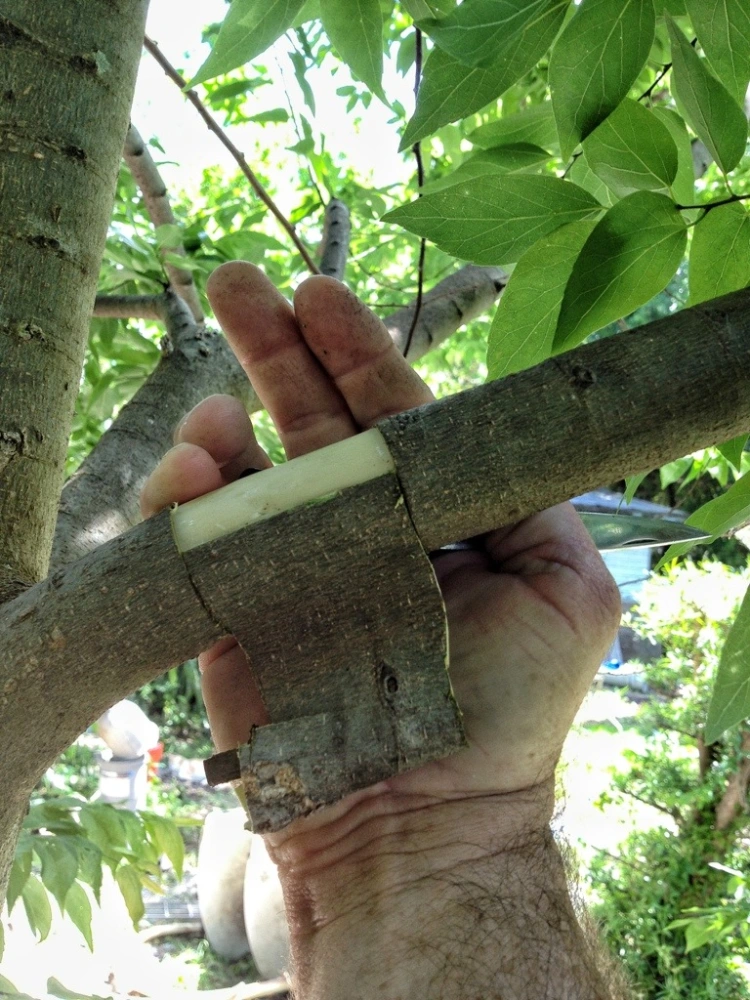

dude! you are forealiously prolific. just got done reading through all of your blog and i must say ive learned a ton. you put it in terms normal people can understand. i cant wait to be back in florida and start working on some trees
LikeLike
Thanks. You’ve read the whole blog? How long did that take?
Where are you living now?
LikeLike
3days maybe? not much to do in the evenings since i told comcast cable to take a hike. ive been in savannah ga for 3 years but im moving back to my home town of naples in may
LikeLike
Well, welcome back. Make sure you visit Erik Wigert when you get down there
LikeLike
question adam. if i start developing ficus from small cuttings, would it be better to plant them in the ground or would an oversized pot be just as fast. and if i did put them in the ground would it be beneficial to fill in thehole and around their roots with turface? thanks and sorry for silly questions
LikeLike
A cutting is best developed in a pot until the roots are numerous. Then keep bumping the pot up every year. When you get to a 7 gallon size you can put it in the ground
LikeLike
Excellent!
LikeLike
Thanks!
LikeLike
Hey Adam, Have you ever heard of air layering miniature Jades/ is it possible?
LikeLike
Hi Jacob
For dwarf jades, there’s reasons one doesn’t air layer.
The idea do an air layer is to provide an area that is wet and dark to try to trick the tree into rooting.
A jade is a succulent, which means the impetus for root response is a lack of moisture. An air layer would just cause rot.
The best way to propagate is by cuttings. Cut off whichever branch you want. Let it dry out for a day or two above soil, put it into a dry, coarse mix and don’t water it until you see new growth. Usually a week or two. The new growth means that the roots have grown
LikeLike
Thank you for the details in description and photos. I would like to air layer a variegated shrub and share with friends, I have read you can use sphagnum moss and here you are using it! I would like to try my hand and trust the project will be successful. We love very upright tree trunks, there is a variety growing in the Sabie/Hazyview area, near Kruger National Park South Africa, but these can grow to about 80 feet I think, and the trunk has beautiful bark. Thanks again it was a great read 🙂
LikeLike